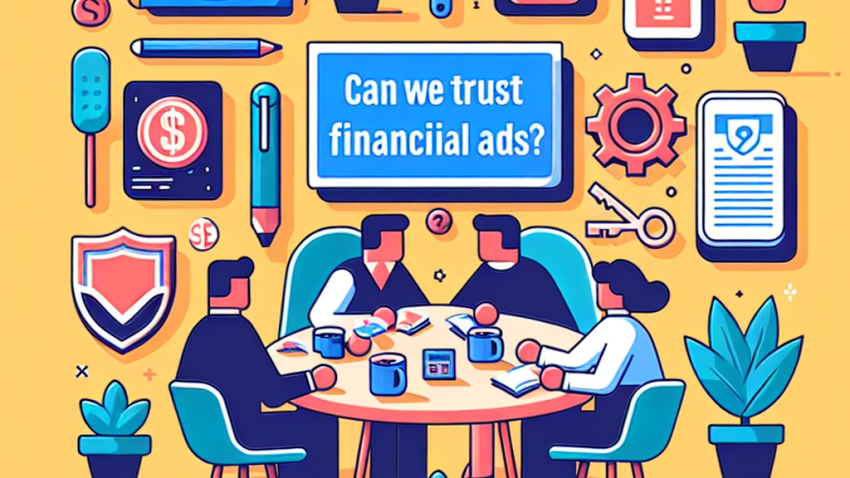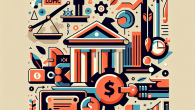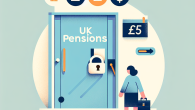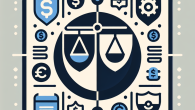
Can We Trust Financial Ads? What the ASA Has Found Recently
Title C – The Silent Fee Epidemic: How Hidden Charges Drain Your Wallet and What You Can Do About It
Imagine paying for a $75 concert ticket… and then being slapped with $25 in “service” and “processing” fees at checkout. Poof — your night out just got 33% more expensive. This isn’t just annoying — it’s part of a larger, systemic issue plaguing everyday consumers: hidden fees.
Hi, I’m Eleanor “Ellie” Cartwright — financial policy watchdog, consumer rights advocate, and someone who thinks your wallet deserves better than a dozen mystery surcharges. Today, we’re diving into the murky world of hidden fees, exposing how they quietly erode your finances (without your consent), and — most importantly — how you can fight back.
What Are Hidden Fees, Really?
Hidden fees, also known as “junk fees” or “drip pricing,” refer to costs added at the final stage of a transaction that weren’t clearly disclosed upfront. They pop up in industries like:
- Airlines: Seat selection, checked bags, carry-ons (yes, even that now)
- Streaming Services: Extra device charges, ‘convenience’ fees
- Hotels: Resort fees, towel charges (nope, not joking)
- Banking: Overdraft, maintenance, withdrawal fees — sometimes all three in a month!
These fees aren’t just inconvenient — they’re deceptive. They distort pricing transparency, making it difficult for consumers to comparison-shop or make informed choices.
The Economic Impact of Hidden Fees
The Federal Trade Commission estimates that Americans pay tens of billions of dollars each year in hidden fees. Families on tight budgets feel the brunt of this. According to a 2023 survey conducted by Consumer Reports, 96% of U.S. adults said they had been hit with a hidden fee — and over half labeled the experience as “infuriating or stressful.”
Here’s how sneaky charges quietly impact your finances over time:
- They distort value comparison. That $25 monthly gym membership? It’s $32.99 with “equipment maintenance” and towel rental fees. Suddenly, the $29 competitor seems cheaper — when it’s not.
- They eat into savings goals. If you’re charged just $15 per month in unexpected fees, that’s $180/year. Over a decade? $1,800 — with no added value to you.
- They hit vulnerable communities hardest. Predatory overdraft fees disproportionately affect users with lower financial literacy or limited access to credit, tipping them into deeper debt cycles.
Why Hidden Fees Persist (And Who’s Allowing It)
So why is this still happening when people so clearly hate it? The answer lies in weak regulation, industry lobbying, and yes — a lack of consumer resistance. Many companies thrive on “price drip” tactics precisely because annoyed customers often feel helpless. As long as regulators allow it and we keep tolerating it, the fees keep coming. But, guess what? Momentum is building on both fronts.
Enter: Consumer Protection Agencies
The Consumer Financial Protection Bureau (CFPB) and Federal Trade Commission (FTC) are increasingly cracking down on exploitative fee structures. In 2022, the Biden administration announced an initiative to target “junk fees,” particularly in the airline, hotel, and financial sectors.
To quote the CFPB’s Director, Rohit Chopra: “The era of fee-harvesting business models, particularly in financial services, is coming to an end.”
How Can Consumers Fight Back?
Okay, now that we’ve vented — it’s time to take action. Yes, you can do something about hidden fees. In fact, here are my top steps to becoming a fee-fighting champion:
1. Always Read the Fine Print
No, you don’t need a law degree — just patience and a strong cup of coffee. Before booking, purchasing, or subscribing to anything online, go through the full checkout process to see the total cost. Watch for vague language like “may apply” or “estimated charges.”
2. Call and Challenge the Fee
Your voice has power. If charged a mysterious fee, call the provider and ask:
- What is this fee for?
- Was it disclosed earlier?
- Can it be waived?
Often, companies would rather remove the fee than lose a customer. Be polite, but firm.
3. Vote With Your Dollars
The best way to protest is to take your business elsewhere. Use companies that disclose full pricing upfront, or those endorsed by consumer advocacy groups. We all play a part in reshaping market behavior through intentional purchasing decisions.
4. Report Abusive Practices
Spot a pattern of hidden charges? Let the authorities know. Report it to the:
This helps regulators build cases and pressure companies to reform.
5. Use Transparent Tools
Several apps and websites are emerging to detect and expose hidden fees for airline tickets, banking, even hospital billing. Some of the best-rated include:
- Truebill (now Rocket Money)
- Hiatus
- Billshark
It’s About Fairness, Not Just Finances
Here’s the thing: hidden fees don’t only hurt your bank balance. They undermine trust in the entire marketplace. When corporations profit from deception, the average citizen is left cynical, stressed, and broke.
And while yes, policy reform is a slow, grinding wheel, change starts at the individual level. Every time you spot a junk fee and call it out — every time you walk away from a sketchy charge — you chip away at the structure that enables these practices.
Final Thoughts From Ellie
We deserve pricing that’s upfront, honest, and reflective of the actual service we’re receiving. Not backdoor charges slapped on like a sarcastic insult after the deal is done.
If we demand more transparency — as consumers, voters, and human beings — business models will follow. Until then, keep your eyes open, your voice strong, and your inner watchdog well-fed.
Have your own hidden fee horror story or solution you’d like to share? I’d love to hear it. You can reach us directly through our contact page, or learn more about our mission and advocacy at our About Us page.









Leave a Reply